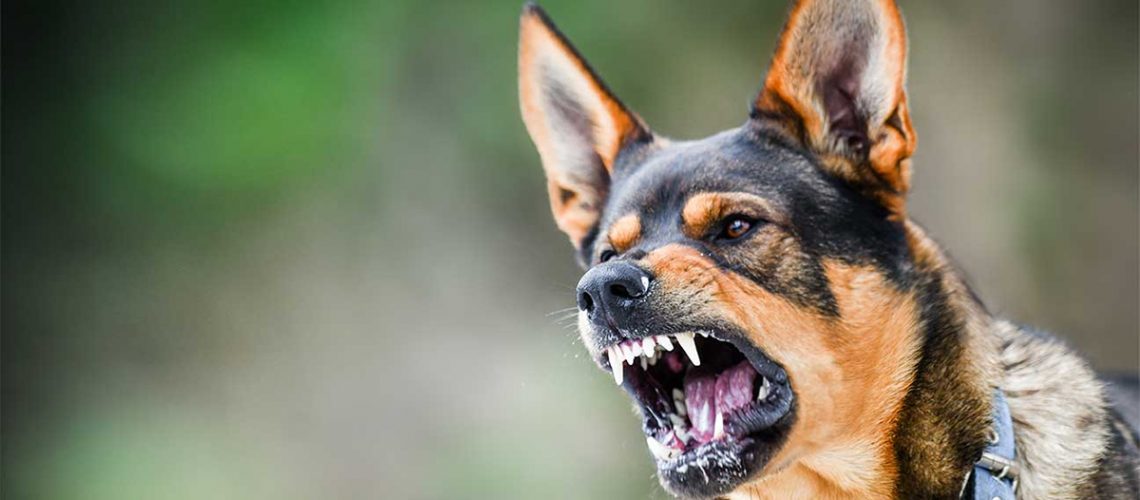Common Reasons Why Dogs Bite
While all dogs have the potential to bite, it is important to recognize the common triggers that can lead to aggression.
By understanding why dogs bite, pet owners can take preventive measures to ensure a safe environment for their dogs and others. Reasons dogs may bite include the following:
1. Fear
5. Pain
10. Previous Trauma
Whether it is fear, resource guarding, or other factors, identifying these common reasons for canine aggression can help mitigate the risk of bites and promote a harmonious relationship between humans and their furry companions.
Fear and Anxiety
One of the most common reasons why dogs bite is fear and anxiety. When dogs feel threatened or cornered, they may resort to aggression as a means of self-defense. It is important to recognize the signs of fear in dogs in order to avoid triggering a bite, such as:
- Attempting to retreat
- Cowering
- Trembling

Resource Guarding
Dogs are naturally protective of their possessions, whether it be food, toys, or even their sleeping area. Resource guarding can lead to aggressive behavior, especially when someone attempts to take away that valuable resource.
It is essential to teach dogs proper resource-sharing through positive reinforcement training to prevent potential bites.
Protective Instincts
Dogs have a strong instinct to protect their family members or territory. When they perceive a threat to their loved ones or their personal space, they may exhibit defensive aggression. Recognizing triggers that may provoke protective behavior can help avoid potential bites.
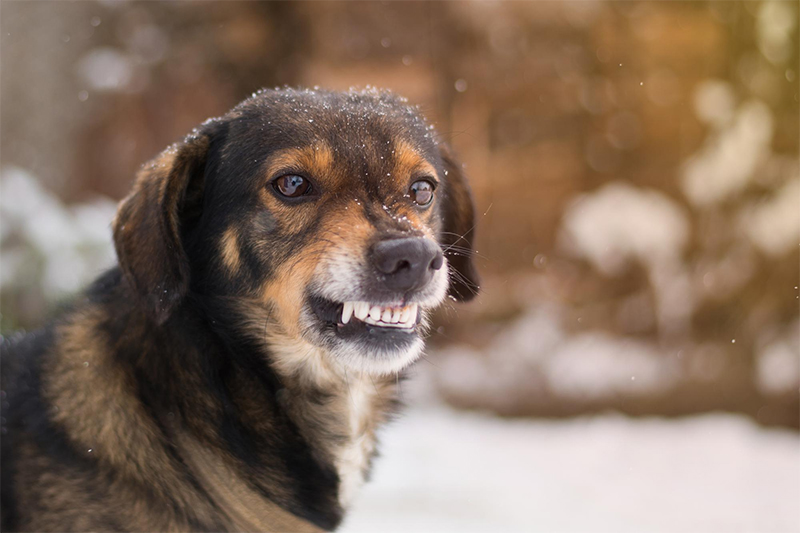
Lack of Socialization
Insufficient socialization during a dog’s critical developmental stages can contribute to fear and aggression toward unfamiliar people, dogs, or situations.
Proper socialization can help dogs become more comfortable and confident, reducing the likelihood of biting due to fear or anxiety.
Pain or Health Issues
Dogs in pain or experiencing underlying health issues may resort to aggression as a means of communication. It is important to seek timely medical attention and address any discomfort they may be experiencing to prevent situations where a dog may bite out of pain or distress. [2]
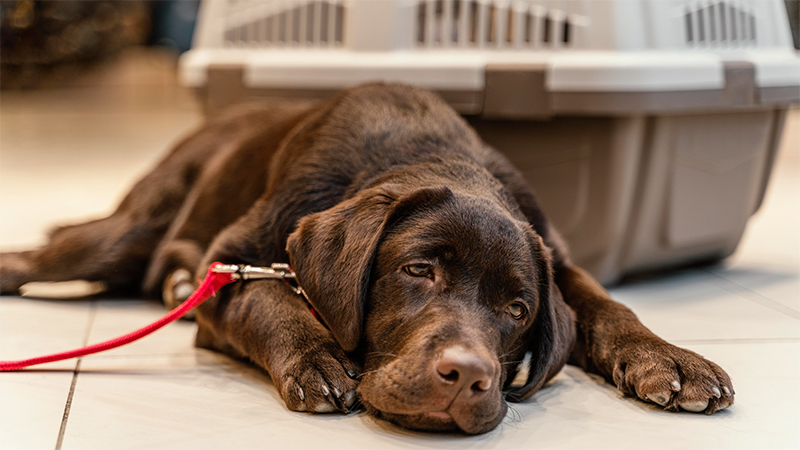
Lack of Obedience Training
A dog that has not received proper obedience training may demonstrate aggressive behavior due to a lack of discipline or understanding of boundaries. Consistent and positive reinforcement training can help establish a clear hierarchy and prevent aggressive displays.

Provocation or Mishandling
Sometimes, unintentional provocation or mishandling can cause even the most docile dog to bite. Pulling on their tail or ears, startling them from behind, or engaging in rough play can lead to a defensive bite response. It is crucial to interact with dogs gently and respectfully to avoid unnecessary aggression.
Fear of Children
Dogs may display aggression towards children due to their unpredictable movements or high-pitched voices. It is essential to supervise interactions between dogs and children carefully, teaching both parties how to behave appropriately and safely around each other.
Children who are not educated on how to properly interact with dogs may unknowingly provoke a negative response. Teaching children to handle dogs with care, respect their boundaries, and understand their body language can reduce the risk of bites.
Maternal Instinct
Maternal instincts in dogs can sometimes manifest as aggression towards people, especially when it comes to protecting their offspring. This protective behavior may arise when a mother dog perceives a threat or believes her puppies are in danger.
This aggression can extend to individuals who approach too closely to the puppies or try to handle them without the mother’s permission. A family pet displaying maternal aggression may exhibit possessive behavior over her puppies, growling or even biting if she feels they are being jeopardized.
Pay close attention to a mother dog’s body language, as it often provides warning signs of potential aggression, such as raised hackles, a stiff body posture, bared teeth, and growling.
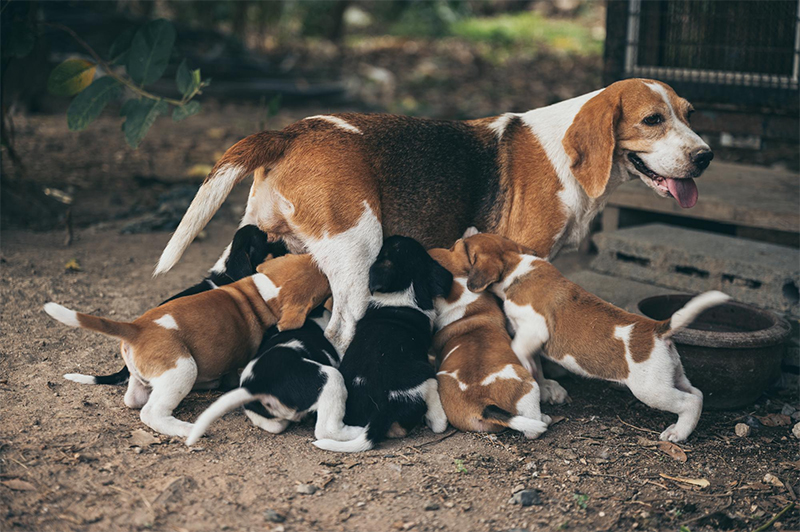
Previous Traumatic Experience
Dogs that have experienced trauma or abuse in the past may be more prone to aggressive behavior as a result of their past experiences. Understanding a dog’s history and providing them with a safe and nurturing environment can help prevent future incidents of aggression and promote their emotional well-being.
Understanding Your Dog's Body Language
Dogs communicate their emotions and intentions primarily through body language. By being aware of these signals, you can better understand your furry friend’s emotional state and respond accordingly. Some key body language cues to look out for are:
- Fearful Dog: A fearful dog will display signs of avoidance, like cowering, trembling, or tucking their tail between their legs. They may avert their gaze, flatten their ears against their head, and have a tense body posture.
- Happy Dog: A wagging tail, relaxed body posture, and a friendly, open mouth indicate a happy dog. They may also playfully jump, have a loose body, and make friendly eye contact.
- Mad Dog: When a dog is angry or feels threatened, it may display aggressive body language. This can include raised hackles, a stiff body posture, bared teeth, growling, or even snapping.
- Sad Dog: A sad dog may have a lowered head, a tucked tail, and sluggish movement. Their eyes may appear droopy, and they may exhibit minimal interest in their surroundings.
- Stressed Dog: Excessive drooling, panting, pacing, or yawning are signs of a stressed dog. They might also lick their lips, have dilated pupils, or show flattening of their ears.
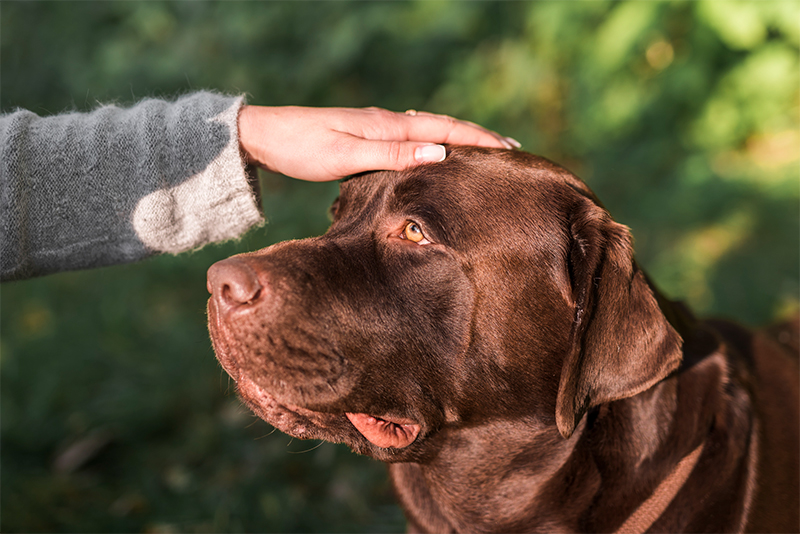
What is Canine Aggression?
Canine aggression refers to the behavior of dogs that exhibit aggression towards people, other animals, or objects. It is important to understand canine aggression in order to prevent future incidents and ensure the safety of both dogs and humans.
There are various types of aggression, and each type of aggression has its own set of triggers and warning signs, making it crucial for dog owners to be aware of these behaviors in order to effectively manage and prevent aggressive incidents.
Understanding the reasons behind canine aggression is key to addressing and managing this potentially dangerous behavior.
Types of Aggression
Understanding the different types of aggression displayed by dogs is crucial in addressing and preventing harmful behavior. Aggression in dogs encompasses a wide range of behaviors that can occur for various reasons. The four main types of aggression observed in canines are:
Territorial Aggression
Territorial aggression is a type of aggression displayed by dogs when they perceive a threat to their territory. Dogs may act aggressively towards people or animals who enter their territory, such as their home or yard. Common warning signs of territorial aggression include:
- Barking
- Growling
- Lunging
To manage territorial aggression, proper training, and socialization are key. Dogs should be taught appropriate behavior and boundaries from a young age. Socialization with other people and animals can help dogs become more comfortable and less reactive toward perceived threats.
It is important for dog owners to take proactive measures to prevent territorial aggression. This can include providing positive experiences with unfamiliar people and animals entering their territory, as well as using reward-based training methods to reinforce appropriate behavior.
Working with a qualified professional dog trainer can be beneficial in addressing territorial aggression and developing a personalized training plan. By focusing on proper training and socialization, dog owners can effectively manage territorial aggression and create a safer and more harmonious environment for all. [1]
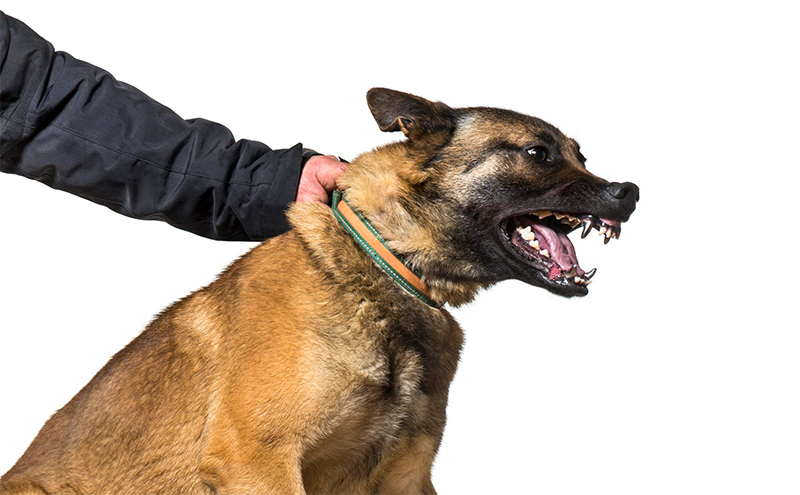
Defensive Aggression
Defensive aggression is a common type of aggression in dogs, often triggered by a perceived threat or fear. When a dog feels cornered or threatened, they may exhibit behaviors such as growling, barking, and lunging as a way to defend themselves.
This type of aggression can be seen in various situations where a dog feels the need to protect themselves or their resources.
For example, if someone tries to take away their food or toys, a dog may respond with defensive aggression. If a dog feels trapped or cornered, they may exhibit defensive behaviors as a way to protect themselves.
Understanding the signs of defensive aggression is important for both dog owners and those interacting with dogs. It’s crucial to recognize when a dog is feeling threatened or fearful in order to prevent escalating situations.
By understanding defensive aggression and taking the necessary steps to address it, we can ensure the safety and well-being of both dogs and humans in their interactions.
Protective Aggressions
Protective aggression, a form of canine aggression, occurs when dogs exhibit aggressive behavior out of protectiveness towards their owners, family members, puppies or personal items such as food bowls or toys.
This behavior is more commonly seen in dog breeds with strong guarding tendencies, such as Bull Terriers or German Shepherds.
Several factors can contribute to a dog displaying protective aggression. One common cause is the introduction of a new puppy to the household.
The resident dog may feel the need to assert their position and protect their resources from the newcomer. If a dog perceives a threat to their owner or family members, it may react with protective aggression to defend itself.
It is important to note that dogs engaging in protective aggression are not inherently dangerous or bad-tempered. Rather, they are displaying an instinctual response to perceived threats. It is crucial to address these behaviors to ensure the safety of both the dog and those around them.
To address protective aggression, it is recommended to seek the guidance of a qualified professional, such as a dog trainer or behaviorist, who can assess the situation and provide appropriate training techniques.
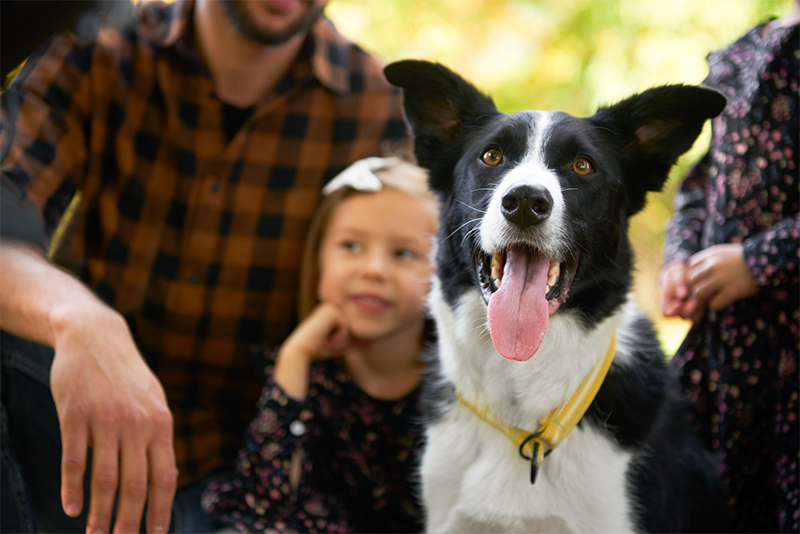
Preventing Dog Bites
Dog bites can be a serious and even life-threatening issue, with millions of people getting bitten by dogs every year. Understanding the reasons why dogs may bite is essential in preventing such incidents from occurring.
From aggressive behavior to territorial and defensive aggression, there are several factors at play that can lead to canine aggression. By recognizing the warning signs, understanding a dog’s body language, and being aware of stressful situations, we can take proactive measures to prevent dog bites.
Seeking professional advice from a qualified dog trainer or a veterinarian, and providing appropriate obedience training and positive reinforcement methods can also go a long way in preventing future incidents.
By identifying the type of aggression exhibited, appropriate training techniques and behavior modification can be implemented to ensure the safety and well-being of both the dog and those around them.
Warning Signs of Aggression
Warning signs of aggression in dogs can help us understand their behavior and prevent potential incidents. It is crucial to be aware of these signs to ensure the safety of both dogs and humans. Some common warning signs of aggression include:
- Barking
- Growling
- Lunging
- Showing teeth
- Snarling
These are clear indicators that a dog is feeling threatened or uncomfortable and may resort to aggressive behavior.
In addition to vocalizations, dogs also display stress and irritation through body language. Increased pulse is often associated with heightened arousal and aggression.
Fast and flat breathing indicates that the dog is in a state of agitation. Wide open and fixed eyes demonstrate alertness and possible aggression.
A tense body posture in a dog indicates either defensive or offensive behavior. A lowered or clamped tail signals fear, anxiety, or readiness to attack.
Knowing a dog’s body language is key to prevent aggression and react properly in tough situations. Stay safe and prevent aggression by being aware of warning signs and creating a safe environment for both dogs and humans.
If You Have Been Bitten by a Dog
If you or someone you love has become the victim of a dog bite, contact an experienced personal injury lawyer at Lein Law today for a free legal consultation.
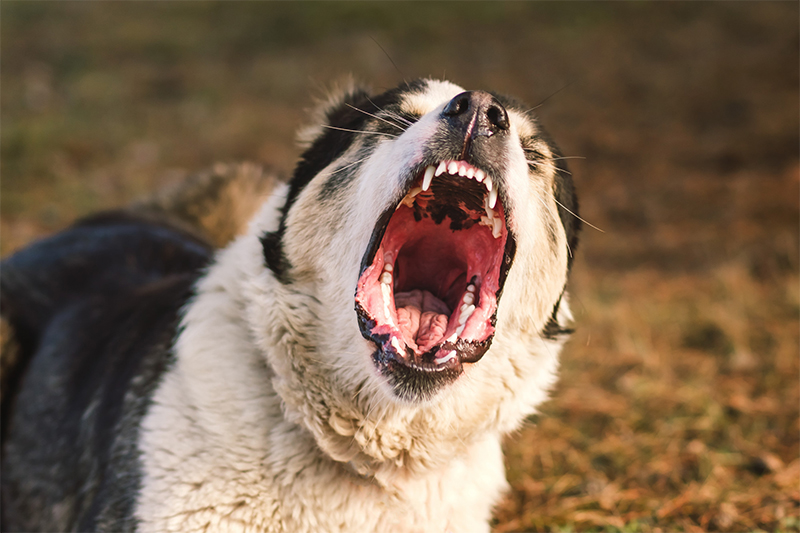
Sources:
[1] If You’re Aggressive, Your Dog Will Be Too, Says Veterinary Study. (2009, February 9). ScienceDaily. https://www.sciencedaily.com/releases/2009/02/090217141540.htm
[2] If your dog is aggressive, maybe it is in pain. (2012, June 12). ScienceDaily. https://www.sciencedaily.com/releases/2012/06/120613102132.htm

